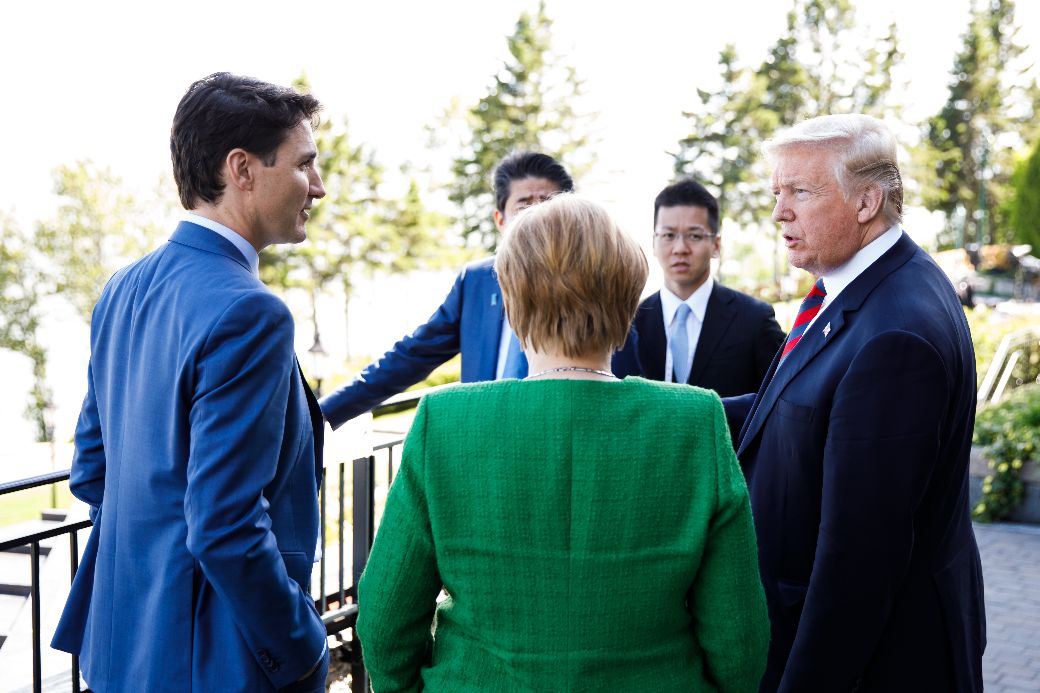Despite his constant denigration of the North American Free Trade Agreement (NAFTA) Donald Trump was prepared to re-negotiate NAFTA after all — but only with Mexico. Canada was frozen out of the bilateral talks between the two other NAFTA partners. These quiet one-on-one negotiations ended after a few weeks with a new agreement that Canada is supposed to accept, even if negotiated without its participation or approval.
The U.S. president has been carrying out a Twitter campaign to soften up Canada, which he contends has been taking advantage of the U.S. for decades.
In between reminding Canadians that he is planning to impose a 25 per cent tariff on Canadian automotive exports, Trump took time out to tell Bloomberg News he would make no concessions to Canada in bilateral NAFTA talks, which are set to resume this week.
Anyone who followed the 2016 U.S. presidential election knew that Donald Trump was determined to terminate NAFTA. It was obvious that for Trump anything that replaced NAFTA had to reflect U.S. primacy in North America even more than the already lopsided deal, whereby the U.S. got privileged access to Mexican and Canadian energy resources, and a bill of rights for its giant corporations.
Inexperienced and unschooled in world politics, Team Trudeau insiders put their confidence in Brian Mulroney. Using the dubious example of his own success in convincing Ronald Reagan to do something the U.S. president had already announced he wanted to do in his inaugural address, namely open trade from the Yukon to the Yucatan, the former Canadian prime minister advised Justin Trudeau to develop a close, personal relationship with Trump.
This make-nice-to-Trump approach was tried, but after fresh U.S. attacks on Canadian softwood lumber and bogus claims of threats to U.S. national security from Canadian steel and aluminium exports, Trudeau went off message.
Speaking in July as G7 chair at the closing press conference of the Charlevoix Summit, Trudeau responded to a question about bilateral relations with the U.S. fulsomely: Canada was not going to be pushed around by Washington. His tough remarks were well received in Canada, but the Canadian prime minister was speaking before the world press, including U.S. media.
What the world audience heard was not what was expected from the G7 chair, who was supposed to be proclaiming a successful conclusion to a friendly meeting of heads of state and government. U.S. Air Force One was tuned in and Donald Trump reacted with fury, pulling U.S. approval from the G7 communiqué, calling Trudeau weak and dishonest, and accusing him of making false statements.
The most recent bullying, insults and attempts to humiliate Canada coming from the highest office in Washington represents a major blow to the trade plans of the Liberal government.
No amount of public assurances from the foreign affairs minister about returning to the table with U.S. “good faith” negotiators are going to dispel the doubts that now surround Canadian trade relations with Washington.
Urged on by the Business Council of Canada, the Trudeau government is now faced with conceding to American NAFTA demands: giving concessions on agriculture, intellectual property, cultural industries, and the dispute mechanism already signalled from the deal with Mexico — and getting nothing in return, other than the promise of a deal.
Even the 25 per cent auto tariffs threatened by Trump (for reasons of national security) are just as likely to go ahead with a new NAFTA deal as without it, just as the U.S. national security steel and aluminium tariffs occurred under NAFTA.
Whatever the pressures on the government, Canada does have options other than being beaten down at the negotiating table.
The U.S. Congress is required to vote up or down in order for a revised NAFTA to be approved. Congress may well refuse either to ratify a bilateral deal that excluded Canada or to accept terminating NAFTA (Trump has said he would kill NAFTA if his Mexico-U.S. bilateral accord gets rejected).
Trump would rather deal with the current Congress than the new one that will convene in 2019. Team Trump want to sign an agreement with the current Mexican government, not the one headed by leftist President Obrador that will replace it December 1, and that would be pressured by its supporters to ask for changes.
Why should Canada not continue to negotiate with resolve rather than accommodate the Trump timeline?
Trudeau has taken to saying that “no NAFTA deal is better than a bad deal” as he tours the country. The reality is that the government has not prepared itself or the country for a no-NAFTA economic environment.
For a Canada without NAFTA, trade and industrial strategy options neglected for decades by Canadian federal governments would be attractive.
The much-needed transition to a green economy would be easier to do without the restrictions imposed by NAFTA, as would the progressive policies on gender, Indigenous, and labour rights that Team Trudeau asserts are necessary.
With little appreciable price to be paid in higher tariffs for Canadian exports, Canada-U.S. trade would be fully covered by World Trade Organization (WTO) rules. Indeed, the WTO is where Canada has gone to seek relief from aluminium and steel tariffs.
There is little popular support in Canada for making concessions to Donald Trump on trade. Indeed, the Liberals risk lasting losses in public esteem should Team Trudeau give in to the bully in the White House.
Duncan Cameron is president emeritus of rabble.ca and writes a weekly column on politics and current affairs.
Photo: Adam Scotti/PMO




